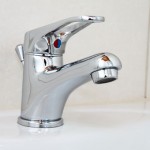Flouride: Healthful or Harmful?
I was scanning through a breastfeeding support forum and came across something kind of scary. As you can imagine, most breastfeeding moms who would visit such a forum are pretty down on formula. I started reading an article and then I started reading the comments. I don’t normally do this as they tend to rile me up, but I found an interesting comment from a woman in Ireland.
Ireland is one of the few countries in Europe that fluoridates their water. The mom on the forum was upset about the fact that formula is made even more inferior to breastmilk by mixing it with fluoridated water. She didn’t get into details, so I looked into it myself.
There is an interesting website about fluoride called the Fluoride Action Network (FAN). I like this website. They cite everything.
Apparently, fluoride is not as harmful when applied topically, like with toothpaste or as a mouth rinse. Drinking it is bad for you. It does nearly nothing to save your teeth as it spends so little time in contact with the surfaces of your teeth. Internally, it decalcifies bones and teeth, causes problems with livers and kidneys, and damages sperm. In nearly all animal trials, it reduced fertility in both male and female subjects. I guess the warning about swallowing your toothpaste isn’t unwarranted. Actually, it’s more serious than that: if a kid under the age of about 9 ate an entire tube of standard fluoride toothpaste, the fluoride could kill them. Hence the warning, mandated by the FDA, on your toothpaste: "WARNING: Keep out of reach of children under 6 years of age. If you accidentally swallow more than used for brushing, seek professional help or contact a poison control center immediately."
All that said, I’m going to send you the CDC’s website where you can see if your community fluoridates its water. Despite the warnings about consuming fluoride from the FDA and all the studies that FAN cites, the CDC is still down with the fluoride in your drinking water.
The EPA has a webpage on fluoride and it has two recommendations for removing fluoride from your tap water: distillation and reverse-osmosis.
I feel like we’re getting mixed signals from our government. CDC thinks fluoride is neater than sliced bread, but the FDA and the EPA have warnings about it. Personally: when in doubt, leave it out (or in this case, get myself a filter to take it out).


